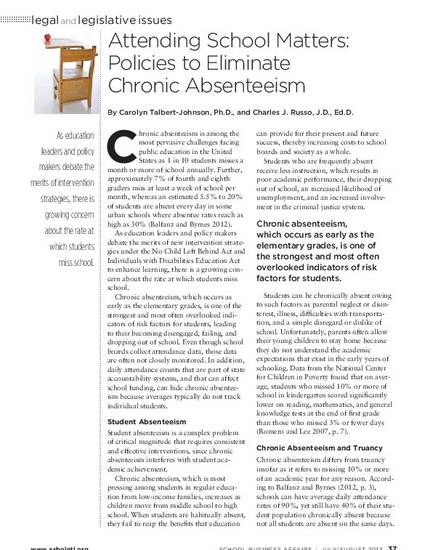
Chronic absenteeism is among the most pervasive challenges facing public education in the United States as 1 in 10 students misses a month or more of school annually. Further, approximately 7% of fourth and eighth graders miss at least a week of school per month, whereas an estimated 5.5% to 20% of students are absent every day in some urban schools where absentee rates reach as high as 30% (Balfanz and Byrnes 2012).
As education leaders and policy makers debate the merits of new intervention strategies under the No Child Left Behind Act and Individuals with Disabilities Education Act to enhance learning, there is a growing concern about the rate at which students miss school.
Chronic absenteeism, which occurs as early as the elementary grades, is one of the strongest and most often overlooked indicators of risk factors for students, leading to their becoming disengaged, failing, and dropping out of school. Even though school boards collect attendance data, those data are often not closely monitored. In addition, daily attendance counts that are part of state accountability systems, and that can affect school funding, can hide chronic absenteeism because averages typically do not track individual students.
Available at: http://works.bepress.com/charles_russo/67/

This document has been made available for download by permission of the publisher.
This article originally appeared in the July/August 2013 School Business Affairs magazine and is reprinted with permission of the Association of School Business Officials International (ASBO). The text herein does not necessarily represent the views or policies of ASBO International, and use of this imprint does not imply any endorsement or recognition by ASBO International and its officers or affiliates. Any additional re-purposing or reprint of this article in this or any other medium is restricted without prior written consent.
Permission documentation is on file.